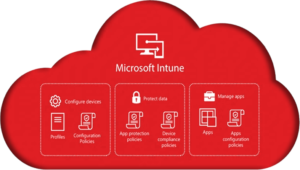Part 1 – Introduction to the new series
Introduction
Here again with another series around Microsoft Endpoint Manager.
In this particular series we are looking to investigate the entire spectrum around application management when it comes to Intune. Now when it comes to application management, its a topic that has been discovered numerous times including by myself. But we’re looking to expand on this in how we look at the overall strategies on a customer perspective – as we know that all organizations won’t have the same requirements.
There are indeed very familiar and blanket template approaches which can relate across all customers, but what do we do when forms of application management suddenly have more of a customized approach? Will best practices and the basics of making an application available (or required) be enough? And this is what we want to achieve – to cover many scenarios where this can happen.
The first part here is sort of an introduction and informative table of contents on what is to be expected in this new series.
How to Define Application Management
The term application management itself can be seen as self-explanatory. But looking at the transitions between on-premise solutions such as SCCM and then cloud solutions such as Endpoint Manager/Intune, these definitions can be changed. So the best way to provide a quick definition for this is to perhaps outline some of the differences of how application management differs from an SCCM side and the Endpoint Manager side.
These definitions are used to provide the warm-up for what is to come within the next few blog posts of the series.
System Center Configuration Manager
Analyzing it from an SCCM perspective, its application management evolves around an assortment based on various types of containers, whether that be Applications or packages, in which all can contain various types of file installations.
These applications are then distributed amongst collections which then hold either users or devices. And these same collections can of course hold different types of membership rules whether that may consist of direct memberships and query rules which are able to pull from AD memberships.
Microsoft Endpoint Manager
Endpoint Manager on the other hand can handle these similarly. But what sets the difference between it’s counterpart is the various different technologies, methods and options which can potentially enhance how application management works when looking in the realm of SAAS (Software-as-a-service) as well as its combinations of enrollment, policies and it’s connections towards bigger features like Autopilot deployment and configuration.
SCCM is capable of providing some of these above too, but as we near into the future where more emphasis may be used to push us into the direction of cloud management through endpoint manager, we ought to be prepared.
What kind of different scenarios will we be going through?
This series will be looking to go into great depth on strategy, design and implementation. I’m also hoping to add some very interesting tips of integrations and automation along the way to give a more entertaining dynamic to the topic of application management rather than going through more of the theoretical components of the overall solution.
Below are the categories in which I will be developing parts to cover the whole of the modern application management series and topic.
Assignments of Application Management
Whilst this may cover some basics, this post will look to open up more on the strategies of overall assignments around application management, and especially where we look at very similar methods of making these available such as SCCM using the Software Center and Endpoint Manager using the Company Portal. Here we will be seeing how we can really work on bringing out the real modern endpoint management experience all the way through.
Defining Which would be part of Company Portal and Required Group Assignment
Similar to the category above, in fact a second part to the category above, we will explore how we make certain software available and its purpose for assignment.
Handling of Applications with limited licensing
This may always be the most talked about and elaborated on for strategy as to how we deal with applications with very limited licensing. To see how this can be achieved through Endpoint Manager, you will be very interested to see this post once it’s released.
Automation using MS Graph
It can never be a series without diving into some kind of automation with PowerShell especially around the MS Graph. Now this can open up many doors to attach to all different kinds of workflows. But we have to remember that it’s not just about having a script that does action a or b, this part will analyze whether certain actions are appropriate to automate and how we accommodate customized requirements for this.
MAM Planning
Everything can be very MDM-driven so we will take more of a dive into the MAM policies which will involve areas such as data protection and overall control of the applications which are already distributed as well as made available via the endpoint manager portal.
Non-Windows/Mobile Application Management Handling
This section will be across all other platforms and not just the windows OS. Requirements for handling mobile devices, as well as cross-platforms which may accommodate MacOSX products and already using technologies such as Casper and JamF will be an interesting part to touch on.
Next Part
The next part will be looking into the first category being around the assignments of application management. We will expand and enrich the basics and really walk-through different methods and ideas on how we will make our software library available across users and devices. Check back soon as we get started with our deep-dive into Microsoft Endpoint Manager and enhancing modern application management. Until then if we can help you one-on-one with a similar implementation, you can always speak directly to one of our Experts via Email or Phone.





